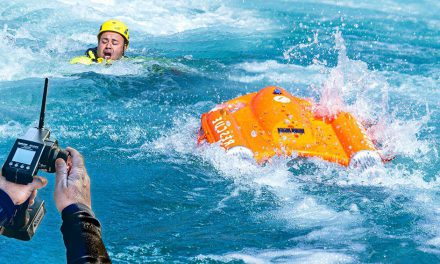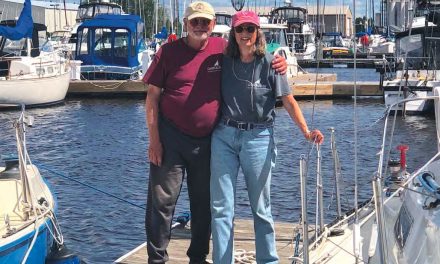
Upgrading a good old sailboat can be a game of cat and mouse. As you wriggle into seldom visited corners of your boat, it’s hard to keep up with all the little unforeseen projects that present themselves to you. This third edition of Daniel Spurr’s Guide will be a real help to do-it-yourself sailors. And following the cat and mouse that Bruce Bingham has sketched into his wonderful drawings will be great entertainment for you and your family.
There are a lot of books available to sailors wanting to improve their boats, but Spurr’s Guide is one of the most readable and practical. Clarity is at the top of the list for me, and Spurr surely provides this. His concise commentary on strengthening and maintaining chainplates, for example, is among the most comprehensible I’ve ever read. Case studies of his work on boats are well-illustrated and easy to follow — even if you hire the work out, at least you’ll get a good sense of what you’re in for before the process begins.
Ideally, boatbuilding is one of those arts that improves over time as builders learn from their mistakes. Of course, we know that builders and consumers inevitably reach compromises, and Spurr offers good suggestions to correct weaknesses in boats compromised by the marketplace. Strengthening weakly supported dinette tables is just one case in point. They should be able to withstand the rigors of offshore life and, as my wife says, withstand a little table dancing at anchor.
Several chapters have been updated and reorganized for this new edition of Spurr’s Guide, which makes it a better book overall. For example, Spurr nicely filled out the chapter on instruments and the electrical system by adding sections on email, weather and time, EPIRBs, and radar. But the addition of forty-three pages of drawings and brief comments on seventy “good old boats” that one might choose for off-shore cruising seems rather an add-on.
Nevertheless, Spurr brings years of experience reviewing boat systems and products as editor of Practical Sailor and senior editor of Cruising World. This significantly enriches his work and is the Guide’s great strength. He has compared and tested a lot of boat products in his time, and he generally discusses products without prejudice to producers. To be sure, his product recommendations occasionally seem a bit uneven, such as his highlighting the Max-Prop feathering propeller, while making no mention at all to the arguably superior feathering props from VariProp or Martec. But these sorts of slips are few.
If you’re planning to upgrade and outfit a sailboat for off-shore cruising, whether you do the work yourself or not, you should get Spurr’s Guide, read it, and keep it handy. Get it, if only for the “Disaster Checklist” (p. 86), which is sound advice for any boat owner who drifts along a coastal waterway.
Spurr’s Guide to Upgrading Your Cruising Sailboat, Third edition by Daniel Spurr (McGraw Hill, 2006; 392 pages)




